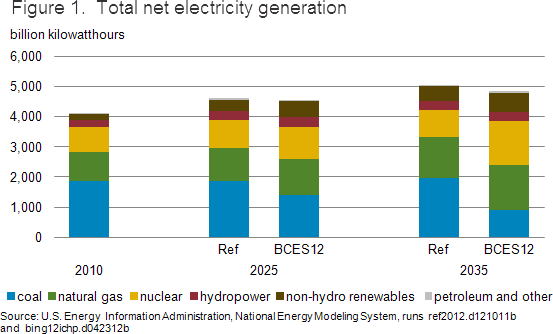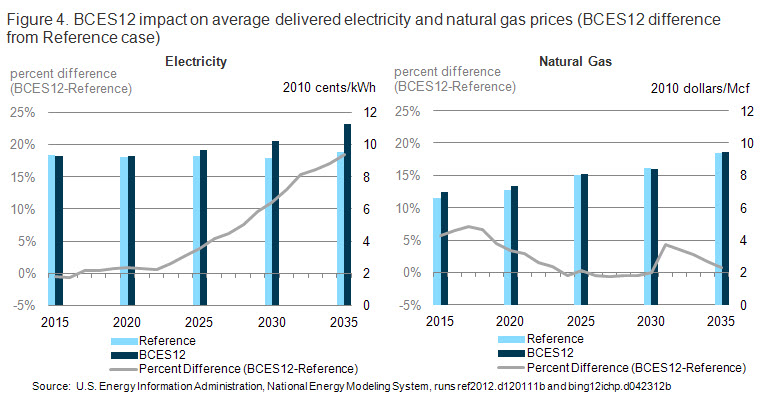Posts Tagged green energy
Colorado’s Diminished-Capacity Senator
Posted by Joshua Sharf in Colorado Politics, Economics, Energy, PPC on May 18th, 2012
Yesterday, the Senate Committee on Energy and Natural Resources took up the Clean Energy Standard Act of 2012, which would “require covered electricity retailers to supply a specified share of their electricity sales from qualifying clean energy resources.” The target would start at 24% in 2015, climbing to its final, and permanent level of 84% by 2035. Senator Mark Udall (D-CO) made the following comments:
“With that, let me just say that this bill would be a step in the right direction. I also want to emphasize that I still support, as I know do many of my colleagues, a renewable electricity standard nationally. We’ve had great success in the State of Colorado with the renewable electricity standard, and I would argue in fact, we felt less of the effect of this Great Recession because of our energy sector’s capacity to innovate, create jobs, and provide power that’s less and less expensive. We all know for example that wind, now, competes with coal and some would argue is actually cheaper than coal.”
There’s enough material to keep us occupied for a week – and it may – but we’ll start with the idea that Colorado’s Renewable Electricity Standard has been a “great success.”
It may have been a great success for Xcel and its shareholders, but for the ratepayers, it’s a slowly building vacuum, sucking more and more of their decidedly non-renewable dollars. In 2011, the RES was responsible for something like 4.5% of Coloradoans’ electricity bills, and number that is only going to grow over time, as the RES ramps up to its final 30% requirement in 2020:
According to the Public Service Company’s 2010 RES Compliance Plan, the ECA is projected to be $6.3 million this year, before it balloons to $141 million in 2012. It then increases exponentially to $738 million in 2020, or almost 23 percent of total retail electricity sales—none of which would count against the 2 percent retail rate impact.
Assuming 1.5 million ratepayers in Colorado (current figure is 1.3 million) in 2020, and the mandated 20 percent renewable standard, the ECA cost alone will average nearly $500 per year per ratepayer.
The ECA is the Electric Commodity Adjustment, and it’s the means by which Xcel gets around the 2% per year rate limit that is supposed to protect consumers from the fact that renewables are, contra, Sen. Udall, much more expensive than traditional sources of electricity. More about that in a succeeding post.
The Colorado plan, if extended to the country as a whole, will have the same deleterious effects on peoples businesses and homes. That link at the top of the page was to an Energy Information Agency study showing the effects of the proposed standard. Not only would the BCES cost dozens of gigawatts of capacity by 2035:

It would also raise the cost of electricity by about 18%:

If you look closely, you see that the EIA assumes that nuclear will take the place of coal’s baseline capacity, but in fact, the extremely large up-front capital expenditures may make that prohibitively expensive, in which case we’ll have no choice but to cover as much as we can with solar and wind. The result of that little dream scenario? We have more capacity, but the price is 20% higher, rather than 18%. The increase in supply still isn’t enough to make up for the extra cost of wind and solar as sources.
Coloradans have excellent reason to wonder why their senator thinks that paying more than neighboring states for their electricity constitutes a “great success,” and Americans should run like the wind from any effort to replicate the experiment nationally.
Slipshod Reporting on Rare Earths & Solar
Posted by Joshua Sharf in Backbone Business, Business, Energy, PPC, Regulation on January 16th, 2011
The Denver Post this morning reports that a lack of rare earths may be inhibiting the domestic solar cell industry. How this is so, they never quite describe. There’s no calculation, for instance, of what percent of a solar panel’s production cost comes from rare earths. Possibly, this is because rare earths aren’t actually used in the production of solar cells. According to a DOE study on strategic materials, solar cells use indium, tellurium, gallium, and maybe soon, selenium, none of which is in the lathanide series of rare earths. A briefing by the Rare Earth Industry Trade Association on the importance of rare earths to green energy applications doesn’t mention solar at all.
By coincidence, the New York Times this morning ran a piece on why solar panel manufacturers are relocating to China, and it seems that the reason has nothing to do with rare earths, which aren’t mentioned at all, and everything to do with our willingness to take the place of Germany and Spain in directing massive subsidies to the panels’ production. And in spite of our increasing mandates on so-called renewable energy as a source of electricity, it’s also not clear that we’ll be willing to force utilities to pay the exorbitant rates necessary to make large solar arrays profitable.
That, not the absence of a local rare earth supply, is what’s threatening a domestic solar industry.



